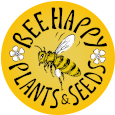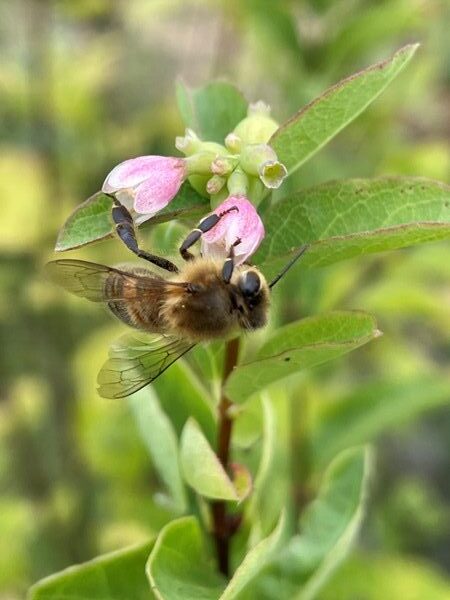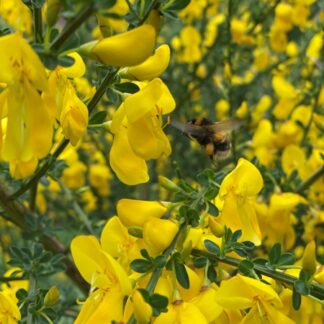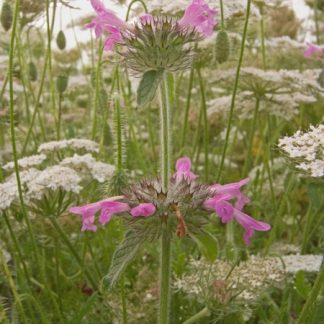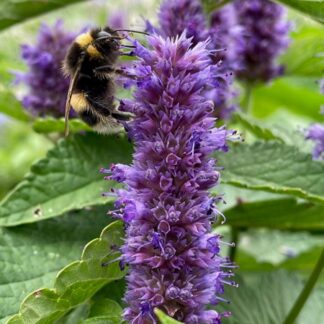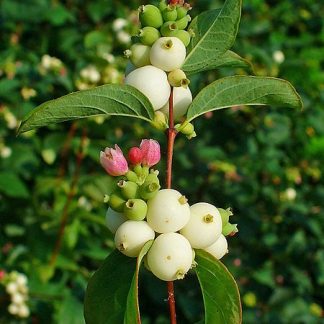Description
Caprifoliaceae (family name)
Forage for Pollinators: Produces Nectar in abundance for Honeybees, Bumblebees, Solitary bees and Wasps; each flower producing nectar all day, still popular despite the fact there are never very many flowers on the shrub at any one time. Pollinated by bees.
Flowering time: June, July, August, September.
Growing information: DECIDUOUS SHRUB growing to 3 m (9ft) by 2 m (6ft).
Hardy to minus 40ºC. A suckering shrub which can form dense thickets especially in hedgerows has pretty, white, bell-shaped flowers which are sought after by honeybees, and the berries like glistening white marbles, appear in autumn (an edible fruit ONLY when cooked, as it contains toxins in the raw state). North Americans (of its native range) used the plant as a medicine and a soap, and sometimes for food, and the wood was good for arrow shafts. In Russia, the berries are crushed in the hands and rubbed about for a soothing folk-remedy hand lotion. Research suggest the saponins contained in the fruit, when applied externally have a gentle cleansing and healing effect upon the skin, killing body parasites and helping to heal wounds.
